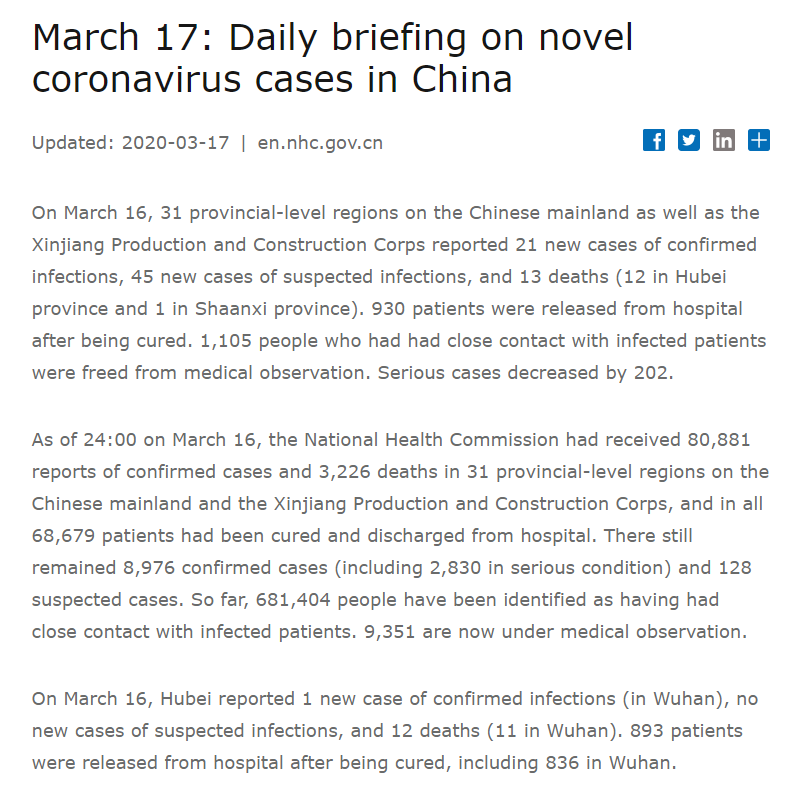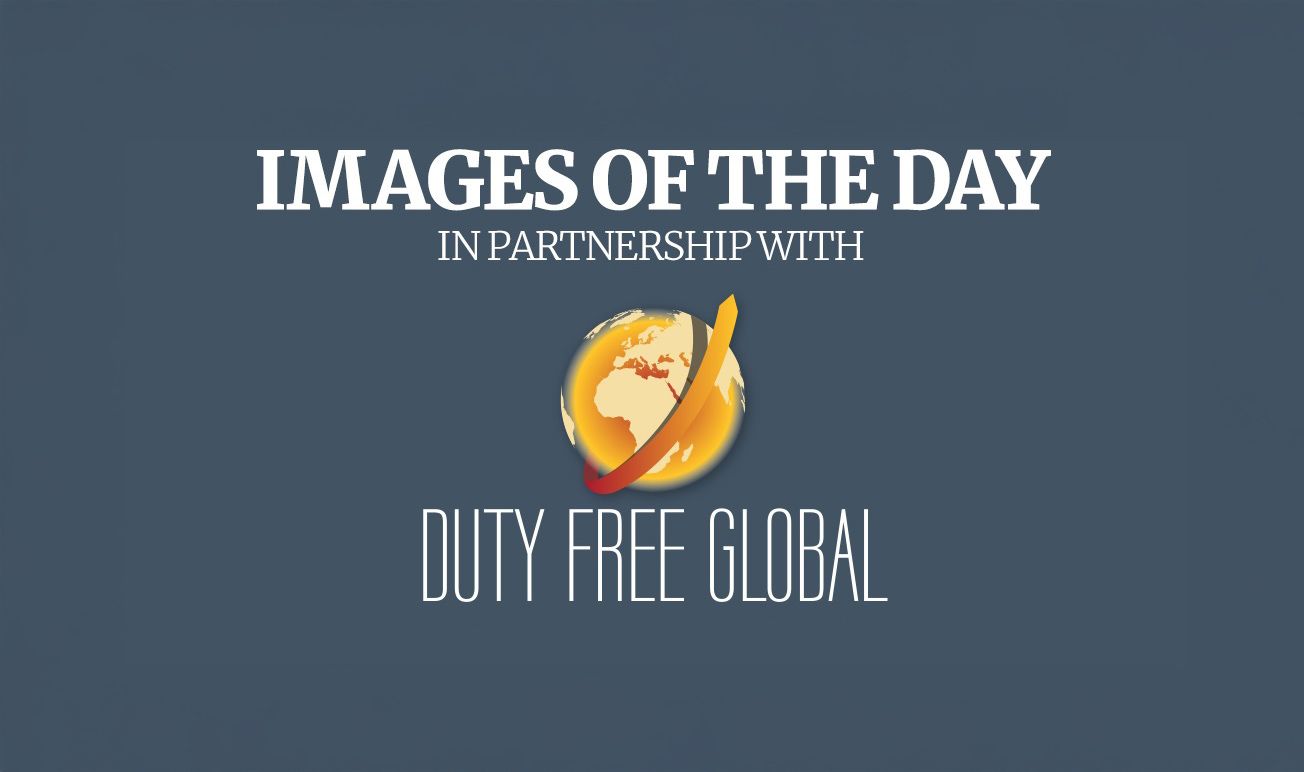
Let me state the key words right from the start. You will forgive the rather artificial use of bold type but I need to make some important points.
Yesterday 930 patients were released from hospital in Mainland China after being cured. 1,105 people who had had close contact with infected patients were freed from medical observation. Serious cases decreased by 202.
Here are some more key statistics, courtesy of the impressive National Health Commission of China’s constantly updated website. As of 24:00 on 16 March, 68,679 COVID-19 patients had been cured and discharged from hospital out of 80,881 confirmed cases. To that point, 3,226 deaths had been recorded.
Yesterday, just 21 new cases were confirmed on the Mainland (20 of them imported from overseas) and 1 – yes 1 – in Hubei Province, whose capital Wuhan was the original epicentre of the outbreak (and the source of yesterday’s single case). There were 12 deaths (11 in Wuhan).
Now let me take you back one month to our report on the various 17 February counts. 1,886 new confirmed cases of COVID-19 were reported in Mainland China with 98 deaths, 93 of them in Hubei Province, which reported 1,807 new cases.
One month is a long time in a pandemic. 1,807 cases plays 1. More of the significance of that in a moment.

Now let’s talk about the Republic of Korea (South Korea). Today the country reported 84 new COVID-19 cases, the third consecutive day in a row that the Korea Centers for Disease Control and Prevention has confirmed fewer than 100 new infections amid clear signs that Asia’s largest outbreak outside China is easing.
Again, let’s turn back the clock, this time to 22 February. The country had just seen a huge daily spike of confirmed cases (to 556 from 204). Prime Minister Chung Sye-kyun called the situation “grave”.
556 plays 84. And to be parochial for a moment, China and South Korea are, for different reasons, the world’s key travel retail markets. These countries were the first into this crisis and they (and their travel retail sectors) will be the first out of it.
Enough of the statistics. I said in this column at the weekend that it is time to shift the tone and the content of our coverage and that starts now.
One of the people I respect most in this industry, a seasoned luxury goods and former travel retail executive, wrote to me today about the escalating crisis in the west – and people’s reaction to it. “It seemed that the west did not see it as their problem until it was their problem,” he opined. I could not agree more. Some of the coverage in the west, as pointed out time and again by the admirable Chinese state title, Global Times, was pure (make that impure) and simple sinophobia.
“I think the world and industry could use some pragmatism,” my industry colleague continued. “The virus is super infectious and will spread, becoming worse before better. It will, however, get better and while far more virulent then SARS, the pattern is the same. We will have a fast-escalating number of new cases reaching a peak, the cases will start to reduce until the number of recoveries starts to exceed the number of new cases then the cases will wind down to close to zero. It is exactly the pattern in Korea and China – the Korea cycle being the fastest due to the extraordinary work on testing 15k people a day but the pattern is the same.”
“China is at that point of recovery now and I believe you will see a strong resurgence of the local market by April. Already the trends have improved dramatically. Yes, travel retail will be later but for sure travel retail cannot recover before the homeland recovers.”
These are salient words. Countries such as China (including its Special Administrative Region of Hong Kong), South Korea and Singapore have worked stoically (often courageously), efficiently and rapidly to get this super-infectious disease under control. The Ministry of Health Singapore’s daily update is magnificent in its detail, even offering street names of the source of each new infection. In classic Singaporean style the tone is efficient not emotive. Notably, the bulletin leads each day on the number of patients released from hospital and the total recovery numbers to date.

Back to my learned industry friend who points the way forward better than I can. “ The rest of the world is where China was many weeks ago and will get to where China is today, I am confident,” he says.
“We all need to wash our hands, avoid crowds, stay home, watch the evolution of new cases and when we see the crisis peak, prepare for the recovery. China is at that point of recovery now and I believe you will see a strong resurgence of the local market in China by April. Already the trends have improved dramatically and I am confident we will see substantial growth in April. Yes, travel retail will be later but for sure travel retail cannot recover before the homeland recovers. All is very difficult but all is not lost.”
Indeed it is not. So while we must report the travel restrictions and the terminal and store closures, we must also focus on the way ahead, on the path to normalcy (and however hurdle-ridden that path may appear at present, it is there), and – as my learned friend says – concentrate (and here I lapse clumsily back into bold type but it is necessary) on the things that we do control. – Martin Moodie, Founder & Chairman











